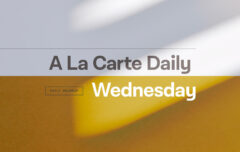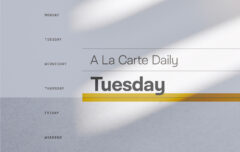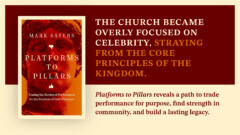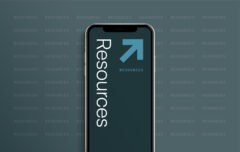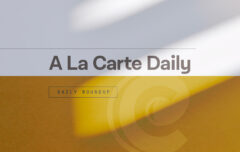There is something to be said for evangelism strategies and discipleship programs. My guess is that most churches have some way to introduce unbelievers to the Christian faith and to mature those who are new to the faith. I would guess as well that most churches keep an eye on the various new offerings, looking for what is original, what is interesting, what promises results. But what if we’ve made it all too complicated? What if both evangelism and discipleship can be as simple as reading the Bible?
One-to-One Bible Reading by David Helm offers the simplest solution of all. “Reading one-to-one is a variation on that most central Christian activity—reading the Bible—but done in the context of reading with someone. It is something a Christian does with another person, on a regular basis, for a mutually agreed upon length of time, with the intention of reading through and discussing a book or part of a book of the Bible.” In their book The Trellis and the Vine (a must-read for anyone involved in ministry), Colin Marshall and Tony Payne dream about just this kind of thing:
Imagine if all Christians, as a normal part of their discipleship, were caught up in a web of regular Bible reading—not only digging into the Word privately, but reading it with their children before bed, with their spouse over breakfast, with a non-Christian colleague at work once a week over lunch, with a new Christian for follow-up once a fortnight for mutual encouragement, with a mature Christian friend once a month for mutual encouragement.
It would be a chaotic web of personal relationships, prayer, and Bible reading—more of a movement than a program—but at another level it would be profoundly simple and within reach of all.
It’s an exciting thought!
It is, indeed. Can you imagine this in your church, in your neighborhood, in your home? It would be a beautiful thing to see.
Helm sees at least four potential benefits in something so simple as one-to-one (or two-to-one or three-to-one) Bible reading:
- Salvation. The Bible alone, when read and understood, is sufficient to turn a heart from darkness to light. In this way it is an effective means of evangelism.
- Sanctification. Christians are told to encourage one another and to build up one another. What better way to do this than to learn together from God’s Word—to allow the Bible to be the training manual.
- Training. Simply reading the Bible together is a great way to train new leaders and future leaders toward greater ministry responsibility.
- Relationship. Many people, and perhaps most people, are hungry for more and deeper relationships. Reading the Bible together is an ideal means of growing deeper in relationship together.
This short book not only explains the why of one-to-one reading, but also the how. In fact, at least two-thirds of the book offers gentle counsel on how to actually go about such a relationship—who to look for, how many times to meet, what books to read in specific circumstances, and so on. There are even short guides to some of the books of the Bible to help those who are uncertain about leading another person through Scripture.
What I love about one-to-one Bible reading is that it extends the expository ministry from the pulpit to the pew. It is not only the preacher who is going to God’s Word week-by-week and day-by-day to teach, to train, to call to faith, but the entire church. It is not longer simply expository preaching, but an expository church where every person is leading others to and through the Word of God.
One-to-One Bible Reading is a short and inexpensive book, but one that accomplishes its purpose well. It’s just the kind of book you can buy in bulk and distribute within your church. Buy it, read it, and implement it!



